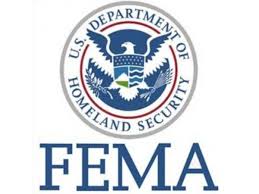 Connie Boulware is a lifelong resident of Houston’s Kashmere Gardens neighborhood. She saved for a long time to purchase a home in the area where she could live with her college age son. Not long after she invested in upgrades to the house, including a new roof, Hurricane Harvey struck. Boulware’s home was badly damaged, roof and all.
Connie Boulware is a lifelong resident of Houston’s Kashmere Gardens neighborhood. She saved for a long time to purchase a home in the area where she could live with her college age son. Not long after she invested in upgrades to the house, including a new roof, Hurricane Harvey struck. Boulware’s home was badly damaged, roof and all.
More than two years later, Connie’s home is still not completely repaired, but much progress has been made thanks to assistance coordinated by ICNA Disaster Relief, one of five partners in a collaborative disaster recovery effort, Project Comeback: TEXAS.
Project Comeback provides expert help – or case management – to those who suffered loss from Hurricane Harvey in navigating through the daunting maze of private and public disaster recovery resources. The program was slated to come to an end in February, but recognizing that many residents have yet to recover, FEMA extended funding for Project Comeback’s efforts through May 2020.
An innovative collaboration involving nonprofit disaster recovery agencies, Project Comeback was created and coordinated by National Voluntary Organizations Active in Disasters (NVOAD) to provide case management to survivors of Hurricane Harvey. NVOAD estimates the funding extension will allow the partners to serve 500 additional households.
Partners include Catholic Charities USA, the official domestic relief agency of the U.S. Catholic Church; ICNA Relief, a domestic disaster response agency of the Islamic faith; Lutheran Disaster Response US, the domestic disaster ministry of the Evangelical Lutheran Church in America; Disaster Services Corporation Society of St. Vincent de Paul USA; and, the United Methodist Committee on Relief, the global humanitarian aid and development agency of The United Methodist Church.
Project Comeback case managers work closely with Harvey survivors to identify and access existing resources and create a plan they can follow to reach recovery.
“Disaster case management is the heart of the recovery process,“ said Carol Flores with NVOAD, who directs the FEMA program grant. “It is the bridge between everyday survivors and the world of recovery resources – be they governmental, philanthropic or from the voluntary sector.”
To date, Flores reports that Project Comeback has served 13,700 households and provided $91 million in value of services. The extension would allow for another $4 million in service value to be provided to Harvey survivors.
“An extension means more time to continue to serve survivors, but also the opportunity to make sure that they are left in as strong a position as possible when this program ends,” said Flores. “Our agencies will be working diligently to make sure every client knows how to continue to support their own recovery beyond Project Comeback.”
The road back to normal following Harvey’s record-breaking flooding is longer for some than others. Families who were already financially vulnerable before the storm tend to have the hardest time scraping together the money for home repairs and replacement of appliances, furniture and essential household items.
Repairs to Connie Boulware’s home were extensive, including new sheetrock and paint in areas affected by mold and mildew, along with cabinetry and appliances for the kitchen and a bath. The project should be complete this spring, including a new roof.
Residents who still need help recovering from Harvey can contact a Project Comeback: TEXAS partner through May. A searchable list of partners is on the NVOAD website: www.nvoad.org/projectcomebacktexas/

